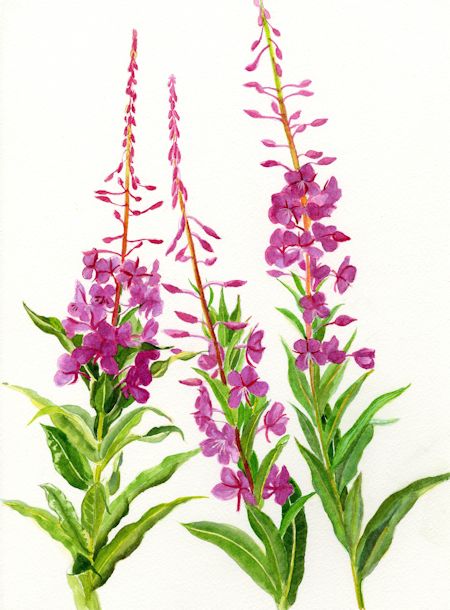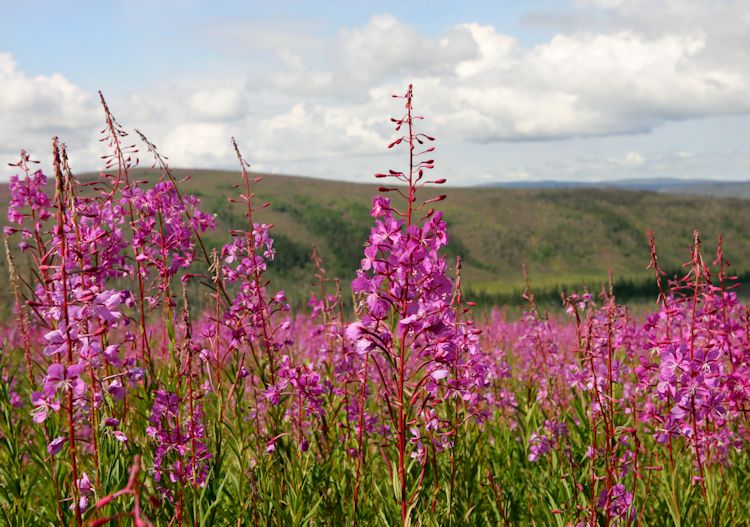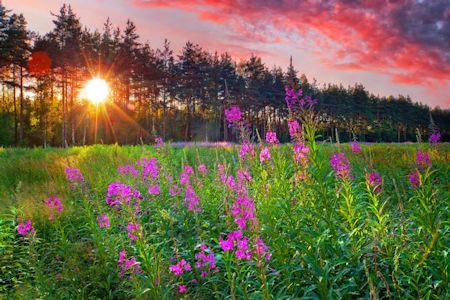Fireweed Honey is the
Sweet Hint of Better Days…
Fireweed honey comes from a plant that is known for pioneering beauty in the face of adversity...
...it is the first emerging plant after a large area of forest growth has been destroyed.
Fireweed will quickly colonize open areas with little competition such as in forest clearings from logging or burn sites caused by forest fires.
A bit of history is revealed when large freshly opened areas colonize densely in the first season!
This plant is able to colonize quickly in large part because its seeds can remain viable in the soil for many, many years. Dense and immediate plant population probably means that years ago the fireweed plant thrived here... and seed was just waiting for a freshly opened area to lift its flowers to the sun once again.
As trees, bushes, and other plants re-grow they will once again crowed the sun loving fireweed and it will die out...
...once again many seeds will lay dormant in the soil until they can feel the warmth of the sun again.
Forest fires seem devastating in some sense every time they happen... the fireweed plant is a good reminder that in the face of every challenge there is potential for beauty to abound!
Fireweed honey is one way that we can enjoy a small part of this beauty. Of course, you must be a beekeeper or know of one to acquire and enjoy this honey...
...Otherwise you will have to do as the Alaskan homesteaders once did when real honey was not available or too expensive. They would use a fireweed honey recipe to make a sugar water solution at a ratio of around 3.25 parts sugar to 1 part water. This sugar solution was boiled with fireweed or clover blooms for flavor and strained before use as a type of “honey”!
Try it if you like...

WHIZZ NOTE: I think I’ll stick with the real fireweed honey if I can find it... you will never get the secret recipe from me for making the real thing!
Flavor... is delicate and pleasant with a “spiced” kick unique to fireweed.
Color... is very light amber to almost water white.
Storage... is average among honeys.
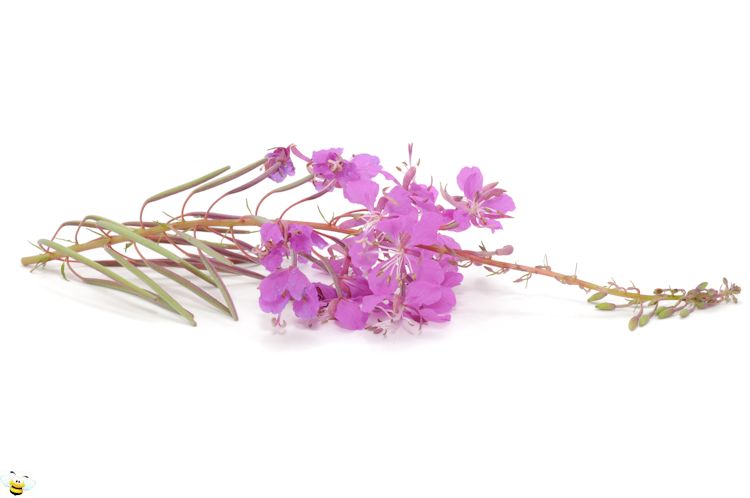
Plant:
Fireweed is a wild perennial herb with a straight reddish stem that grows five to six feet tall. Long and narrow leaves will be found along the stem in a spiral arrangement.
It enjoys wet to slightly acidic soils and thrives in many temperate to arctic climates. This major mono-floral honey source can be found growing further north than any other major honey source. It likes clear open spaces with lots of sunshine.
In addition to reproduction by seed this plant will also propagate by underground root shoots also helping it establish in an area very quickly.
Bloom:
This reddish plant stem is crowned with small flowers along a length of stem. Each small flower is brilliant pink and purplish with four petals in a symmetrical arrangement.
These flowers produce a seed capsule with hundreds of seeds each. A single plant may produce up to 80,000 seeds!
No wonder a clearing can attain a huge number of seeds in the soil in just a few short years.
These highly viable seeds will be good for many years after the growing conditions are no longer ideal… just waiting for another day to feel the sun and grow.
The fireweed plant is found at various elevations and climates that effect exactly when it blooms. It is best for you to get a feel for potential bloom cycles from local people or monitoring these flowers yourself for a season or two.
You will typically find them blooming from as early as June and as late as September... continuing to blooming for most of the summer.
Location:
As already mentioned... this plant flourishes in arctic climates with cold winters and short summers. You will find this honey source flurishing further north than about any other major honey plant. Expect to find fireweed and honey made from its nectar in abundance throughout the Northwestern US including Alaska and Western Canada. Look for this plant in the high mountain valleys and forest clearings of North America for a primary honey source.
Honey and Pollen Potential:
Fireweed is a major honey source for honey bees and beekeepers in the higher elevations of the mountains and the colder regions of the northern parts of North America.
Under ideal conditions this plant can expand in range quickly due to aggressive seed production and underground root shoots.
Even still... this plant will become crowded out as other trees and shrubs grow. This may mean that good fireweed areas will change rather rapidly with one location being good for 2-3 years or so depending on the speed that other plants are growing up and filling in. It is hard to know that you will have a good source for fireweed honey from one year to the next... but it is always worth being prepared to reap the benefits of this tasty sweet treat when it is available.
When your fireweed flower nectar source is measured in acres of densely populated patches... and weather conditions are ideal you can expect to harvest nearly 100lbs of honey per hive with good field bee populations.
Fireweed is also a good producer of pollen and a beekeeper may be able to harvest surplus. This pollen is uniquely blue in color.
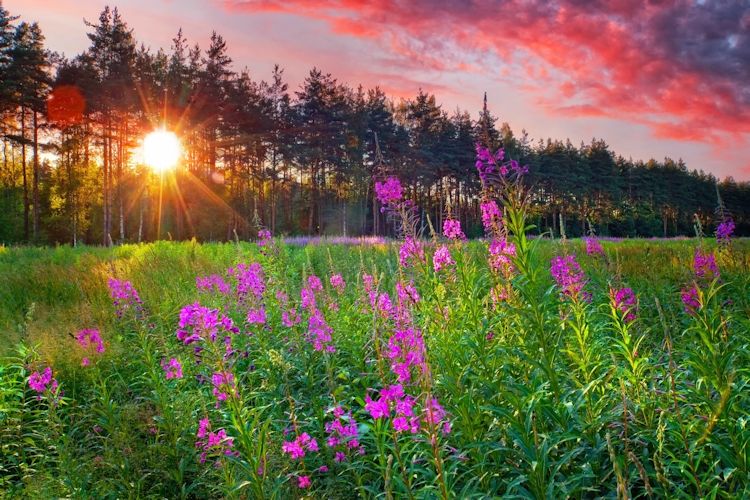
If you ever get a chance to experience a bit of this promise of beauty after the devastation life can sometimes hand us, don’t pass it up!
Enjoy fireweed honey... in barbecue sauces and baking. Also, its distinctive spiced flavor especially compliments fruits and desserts.
Honey › Good Honey Plants › Fireweed Honey
